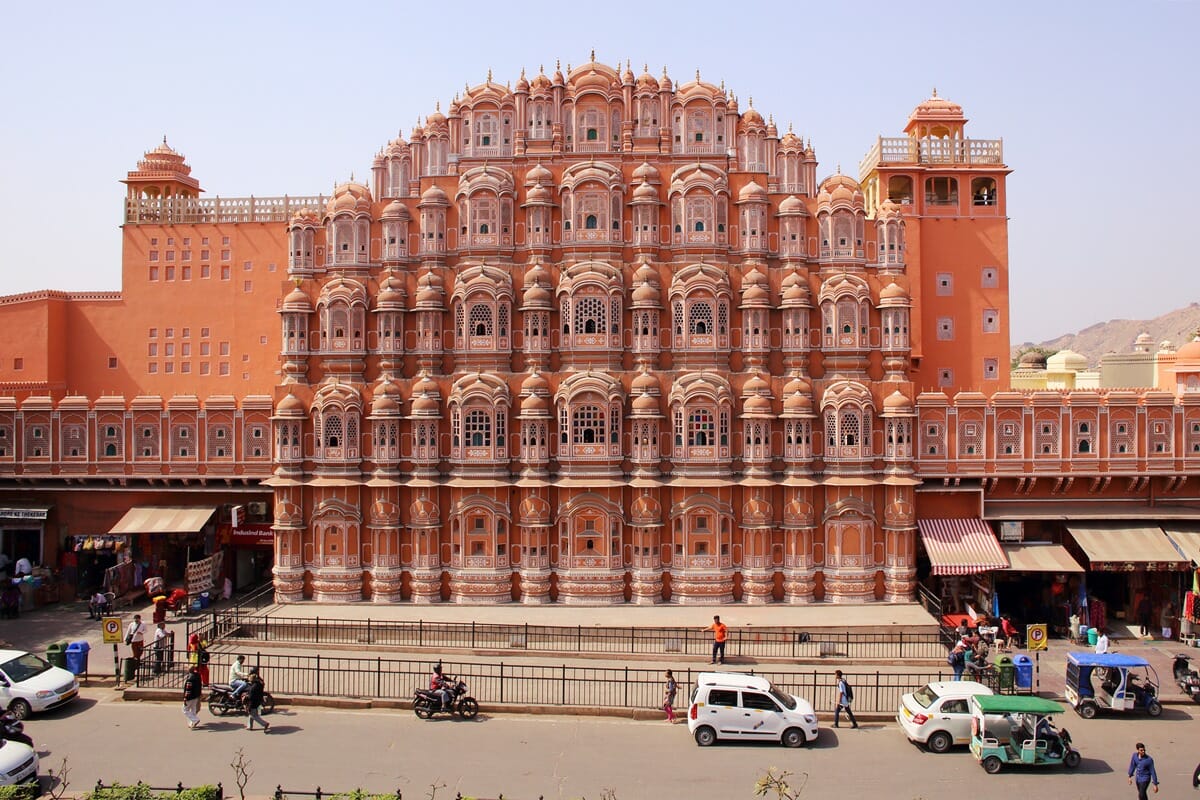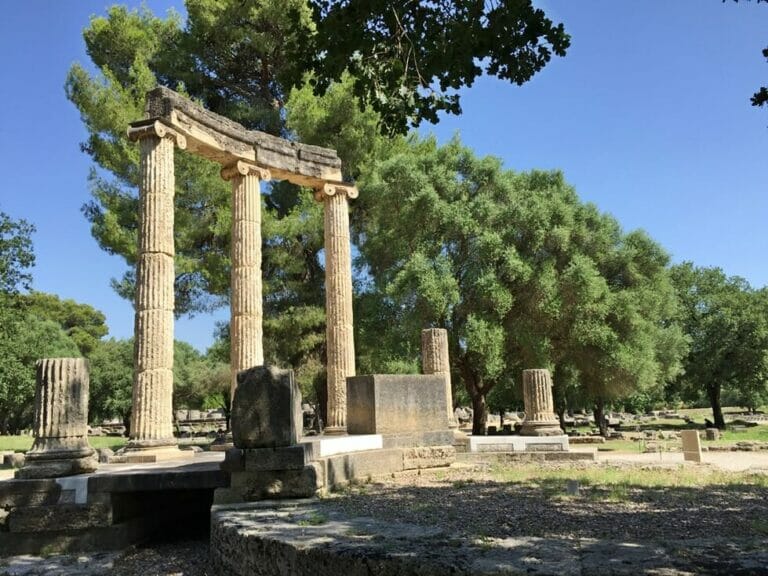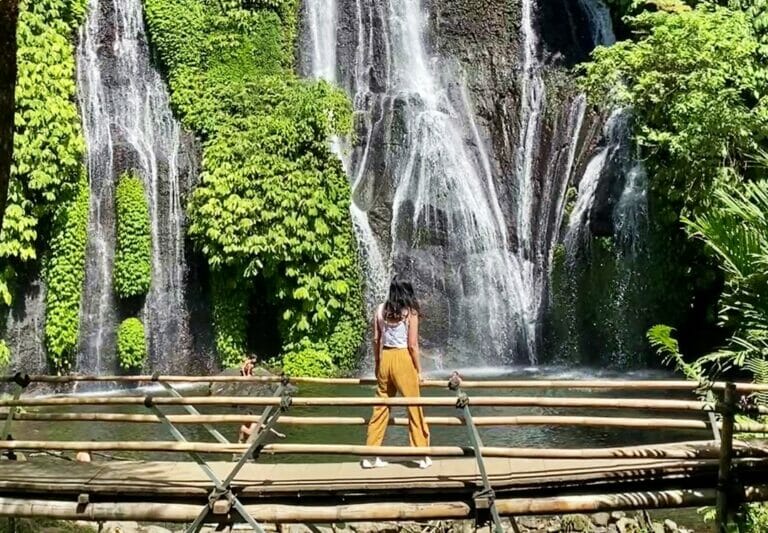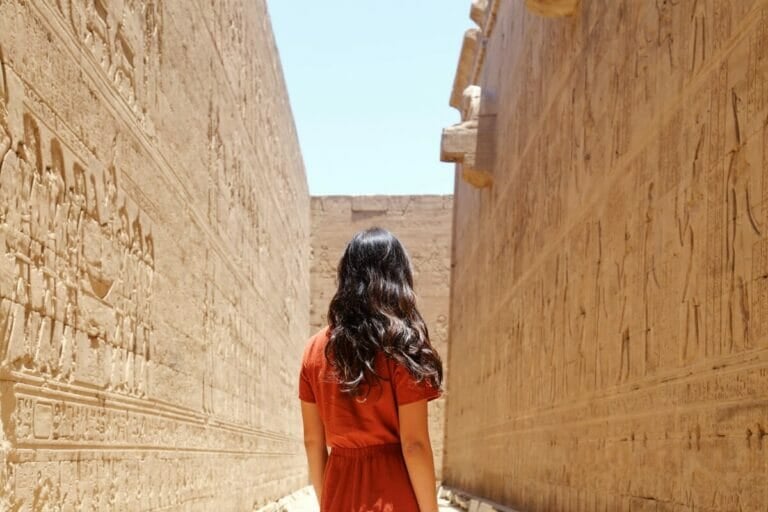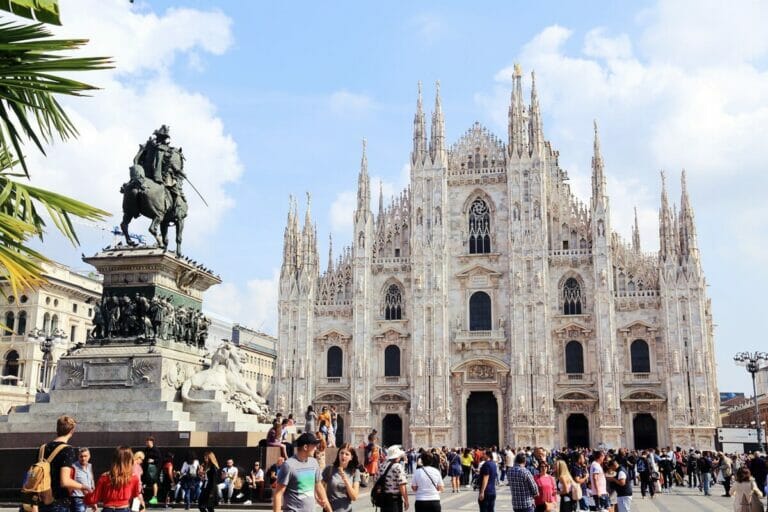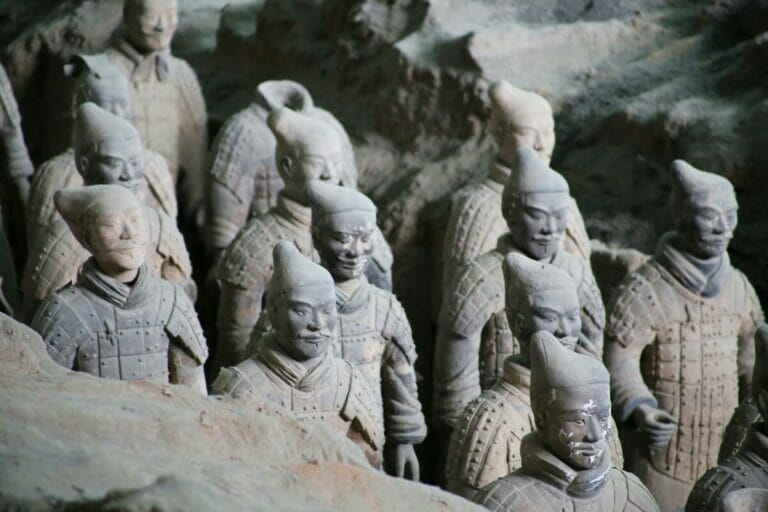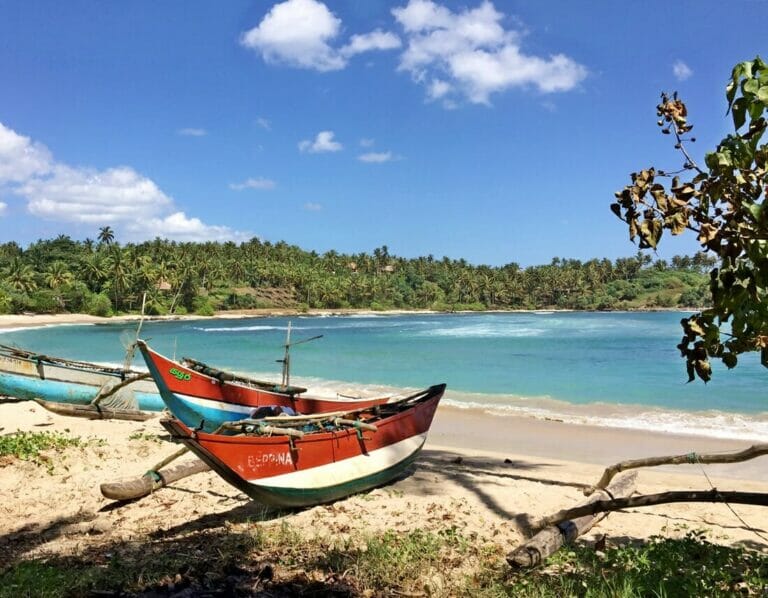Pretty in Pink: A Perfect 2 Day Jaipur Itinerary
The “Pink City” in India is vibrant, rich in history and full of wondrous landmarks. Read on for the top places to see in Jaipur!
Jaipur is the capital of Rajasthan state in western India and was founded by Maharaja Jai Singh II in the early 18th century. Jai Singh became king at just age 11, and was historically regarded as an extremely wise ruler with a keen interest in mathematics and architecture.

He consulted with town planners when establishing the city, and today Jaipur is a rare example of a planned city with the major streets forming a grid. He was also an avid astronomer and spearheaded the creation of advanced observatories which are still used to this day.
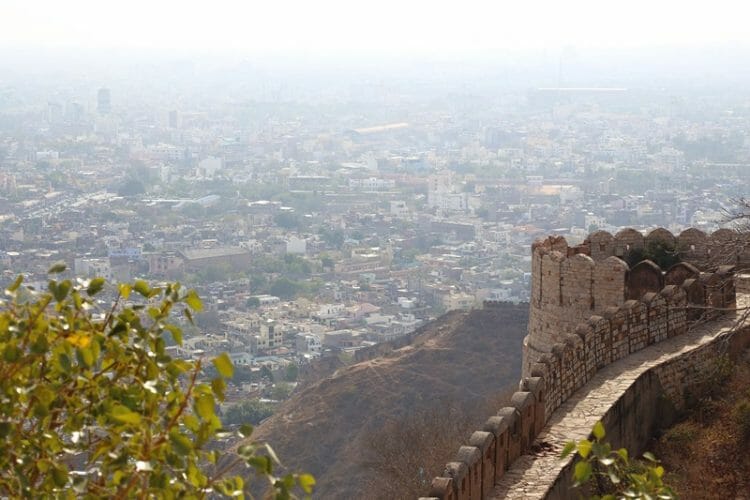
Like many other cities in Rajasthan, Jaipur has a nickname: “The Pink City”, as a large portion of the city was painted a shade of pink to welcome the Prince of Wales from Britain – the city’s pastel-coloured walls are so iconic that they are repainted each and every year to maintain the vibrancy! The city’s design and long-standing artisanal traditions led to the city being inscribed as a UNESCO World Heritage Site in 2019.
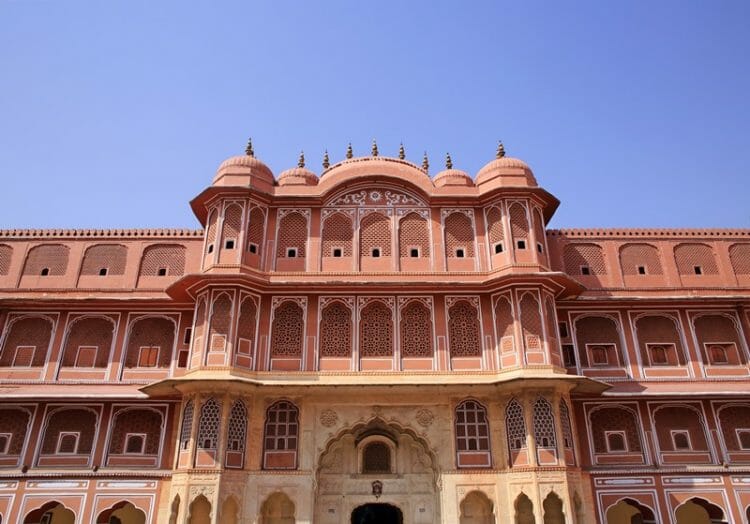
We traveled to Jaipur as part of our 5-day India Golden Triangle tour through New Delhi, Jaipur and Agra, as this is the most classic and popular route that first-time visitors to India opt for.
Of all the cities I’ve visited in India, Jaipur holds a special place in my heart, and I wouldn’t hesitate to recommend the colourful destination to any fellow traveler. Read on for some of the top attractions in Jaipur and an easy 2 day Jaipur itinerary to help you plan your trip!
You might also like: The Complete Travel Guide to the Golden Triangle in India
What you need to know before traveling to Jaipur
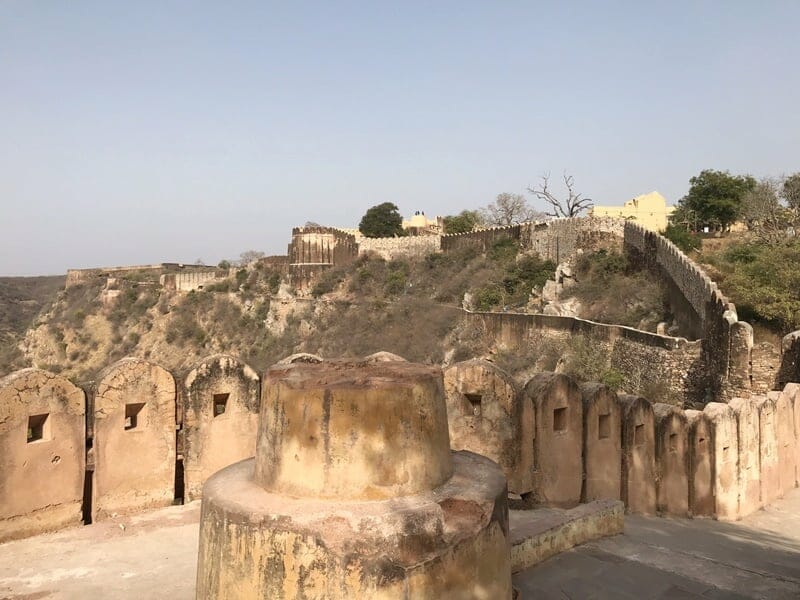
- Best time of year to visit Jaipur: The peak season across India typically runs from October/November to March as this is when the weather is milder – the days are warm but bearable, and the nights are cool. The crowds during this season can be overwhelming in certain cities and popular landmarks – the size of the crowd at each of the sights in Jaipur can be fairly outrageous as it is part of the Golden Triangle, so it helps to be mentally prepared!
- How to get to Jaipur: Jaipur has a small international airport (airport code: JAI) so you can fly there from domestic locations like Delhi, Bangalore or Mumbai but also a select number of international destinations including Bangkok, Kuala Lumpur and Dubai. However, if you are already in India then I highly recommend avoiding air travel if the travel time by car is under 6-7 hours. This is because domestic air travel in India is, quite frankly, a horrific experience with long lines and complicated security checks – you are better off traveling by car or train if you can! If you are traveling from Delhi to Jaipur I highly recommend taking a private car – the drive takes 5 hours via a new highway and you can skip the hassle of air travel.
- Local currency: The local currency in India is the Indian Rupee or INR, and the exchange rate is approximately 80 INR to 1 USD as of mid-2024. Most major hotels and tourist restaurants will accept credit cards (Visa or Mastercard), but markets and many tourist attractions only accept cash. It’s prudent to exchange a small amount when you arrive in India so that you have some cash on you.
- Dress code in India: I highly recommend dressing on the conservative side in India to be respectful of local customs, and some temples will even require that your arms and legs are covered. Make sure you pack some warm clothes as the temperature can plummet in the morning and evening – you will regret not having a thick jacket once the sun goes down!
- Stay connected in India: It is relatively easy to purchase a local SIM card in India, you just need to provide a copy of your passport and passport photo. I’ve never had an issue with data connectivity/reception in the major cities, and data is cheap – we paid approximately 600 Rupees for 1.5 GB a day.
- India visa process: You may be eligible to apply for an e-visa online – the official e-visa website is located here. Make sure you get this process started as early as possible, just in case.
Looking for even more India travel tips and destination guides? Make your way over to this collection of India travel guides!
Best way to travel around India
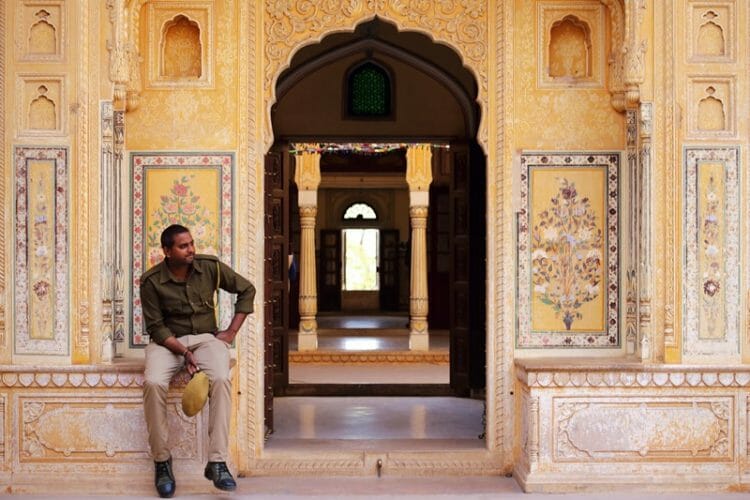
Travelling around India can be complicated if you are not keen on taking public transportation. However, the good news is that there are many transportation options to suit all types of travelers: bus, train, taxi, Uber (in select cities including Jaipur), private cars and domestic flights (which I’ve mentioned are not always the best option).
If you are short on time, I highly recommend enlisting the help of a qualified and experienced tour agency to sort out your multi-city itinerary, and I’ll tell you why: while it’s possible to try to figure out the public transportation network and timetables, I appreciate the flexibility and comfort of having a private car and driver. Travel times between cities in India can be long and arduous, and when you are short on time and energy you will be extremely grateful for an air-conditioned car, safe driver and privacy.
Having a guide in cities like Jaipur ensures that you get a deeper and more thorough understanding of the history and cultural significance of the various monuments, that you don’t waste time during your Jaipur visit on queuing for tickets (our guide provided an “advance” agent who lined up and purchased tickets for us in advance so that we could skip-the-line and waltz right in once we arrived at the various Jaipur attractions), and that you aren’t hassled or scammed by any touts.
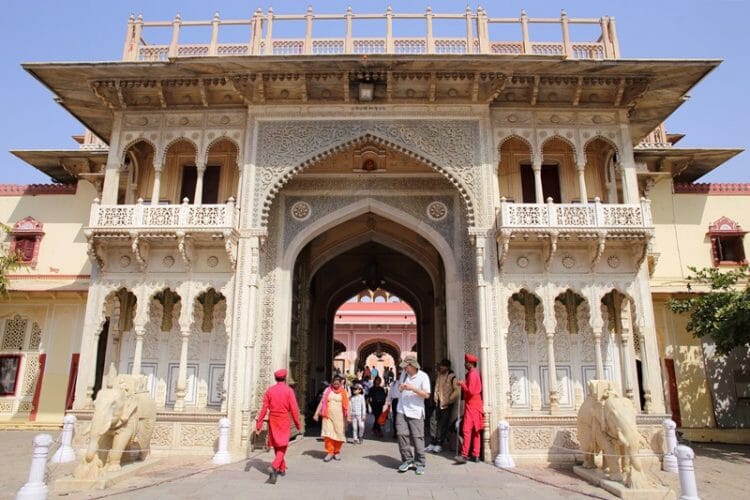
For those looking for a reputable tour company in India, I highly recommend Nand Singh and his team at Top Indian Holidays for their incredible hospitality, safe and reliable drivers and experienced guides – you can read more glowing reviews here. We booked a 5-day luxury Golden Triangle Tour with them, but if you only need a guide in Jaipur you can check out their 1 day Jaipur city tour here. Nand Singh runs a small business so you are not going with a conglomerate company that doesn’t have the time of day for you – their tours are private and provides maximum flexibility, and they’ve always been very open to any additions and changes to the itineraries. Make sure you ask if Yuvraj (or Yuri) is available – he is a fantastic, no-BS guide who knows the ins and outs of the cities he visits.
Alternatively, I recommend approaching your hotel for a private point-to-point intercity transfer and engaging reputable local guides within cities to show you around. If you’re not short on time it’s also possible to take an Uber when traveling between Jaipur attractions – the fares are dirt cheap but can be frustrating if the drivers cancel on you (which, in our experience, they did frequently in Jaipur).
Where to stay in Jaipur
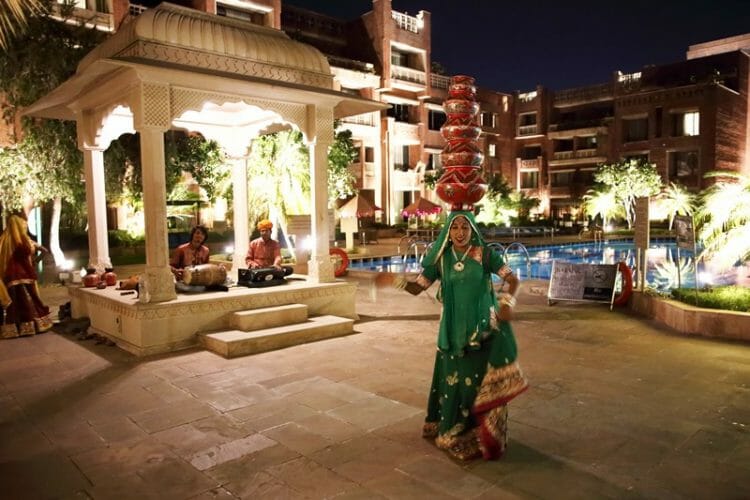
Jaipur is full of luxury and boutique hotels, and you’re spoiled for choice when it comes to deciding on where to stay after a long day of Jaipur sightseeing. The ITC Rajputana is one of the best luxury hotels in Jaipur, hands down. Our stay here was incredibly memorable – there is an excellent pool, friendly and warm staff, spacious and comfortable rooms and a killer bar.
We especially loved the traditional Rajasthan cultural performance and stunning Rajasthan-inspired decor throughout the hotel. Click here to book your stay at the ITC Rajputana, or click here for other highly rated hotels in Jaipur!
You might also like: A 1 Week Rajasthan Itinerary for First Time Visitors
The best places to visit in Jaipur in 2 days
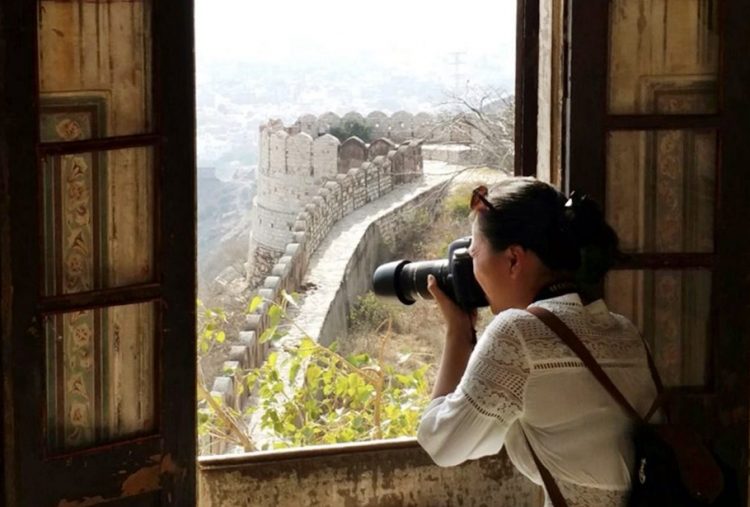
When you are putting together your India travel itinerary make sure you set aside no less than 2 days in Jaipur, 3 days if you can spare the time! The city is rich in culture and beautiful architecture, and I would have happily spent a few more days here. In fact, I’m already planning to revisit the Pink City sometime next year!
For those who are traveling on their own in Jaipur without a guide, it is possible to purchase a multi-attraction ticket ahead of time. This pass offered by The Department of Archaeology and Museums in Rajasthan covers the major Jaipur tourist attractions including the Amber Fort/Palace, Hawa Mahal, Albert Hall, Jantar Mantar and Nahargarh Fort.
Wondering what to see in Jaipur? Read on for my quick Jaipur travel guide that includes the top places to visit and things to do in Jaipur if you’re a first-time visitor!
1. Amer Fort
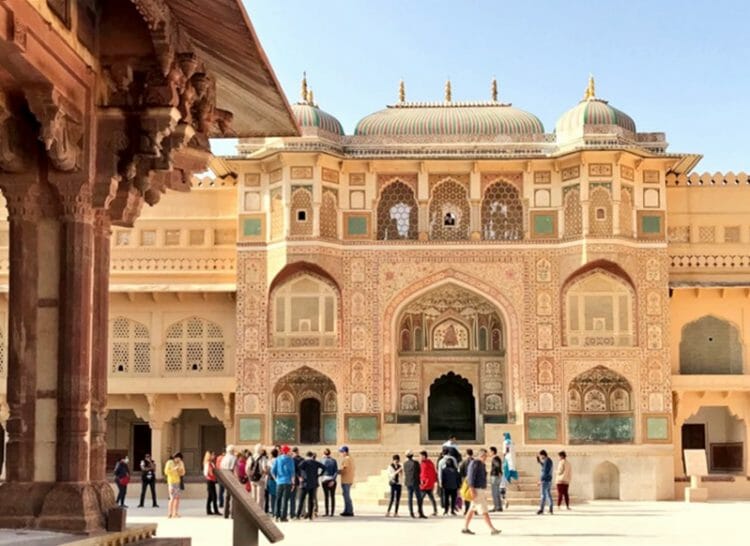
Also known as “Amber Fort”, Amer Fort is located approximately 20-30 minutes by car from Jaipur city. Begin your 2 days in Jaipur bright and early and get to Amer Fort before 9 AM to beat the crowds. The fort features a blend of classic Hindu and Muslim architecture and was built primarily from red sandstone and white marble.
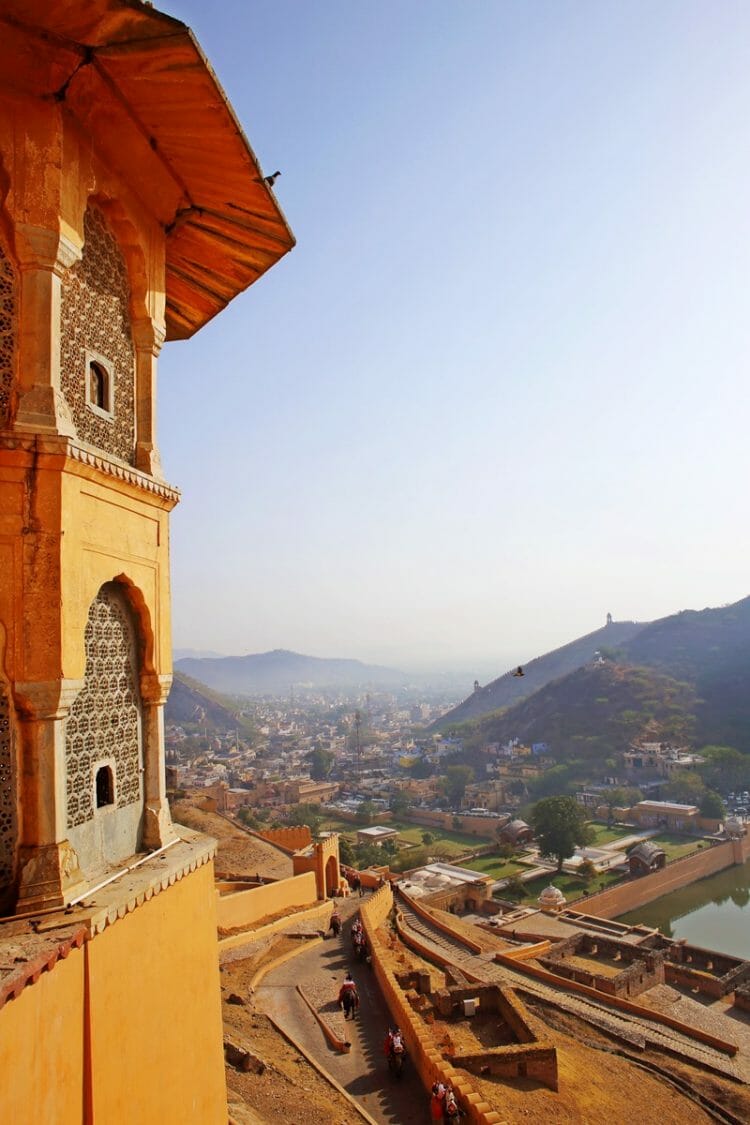
Like the other hill forts of Rajasthan in Jodhpur and Jaisalmer, Amer Fort is a UNESCO World Heritage Site and dates back to the 16th century. The views from Amber Fort are, simply put, breathtaking, and you can see stretches of the fort wall from the viewpoints around the palace. Take your time as you wander around the palace complex and don’t skip the shimmering Sheesh Mahal (Hall of Mirrors), Jai Mandir, Sukh Niwas, Ganesh Pol and Temple of Kali.
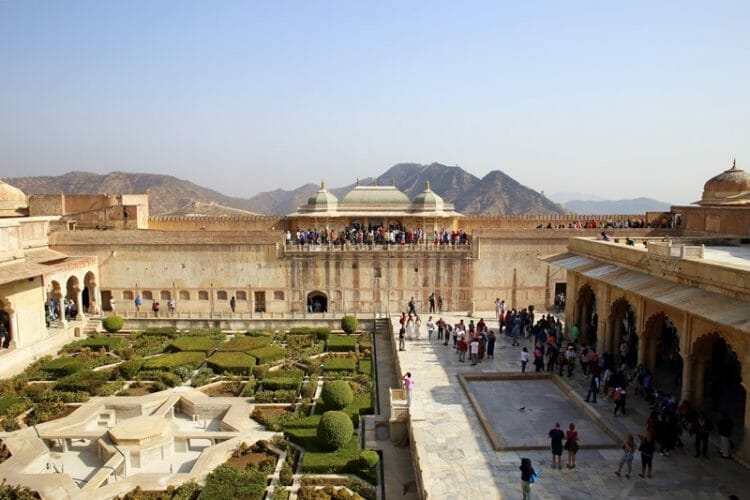
Instead of taking an elephant ride at Amber Fort, drive up to the fort instead. The Amber Fort is open from 8 AM to 5:30 PM. Entry tickets for foreign visitors cost 500 Rupees but may have changed since we visited.
You may also like: Elephant Sanctuaries, Orphanages and Parks Around the World That You Should Visit
2. Panna Meena Ka Kund

The Panna Meena Ka Kund is a beautiful traditional stepwell just minutes away from the fort. It is one of the best preserved stepwells in the region and features a perfectly symmetrical zig-zag pattern.
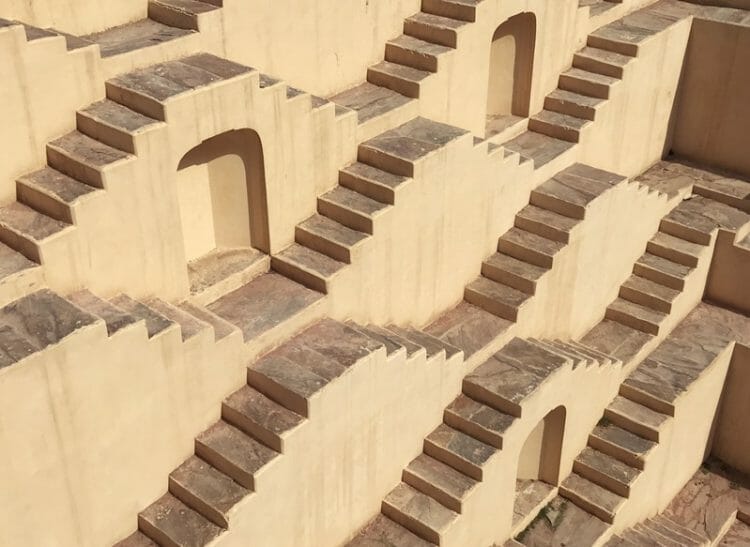
The stepwell doesn’t receive too many visitors so you can admire it free from crowds – there is no fee to visit.
Wondering where to stay in Jaipur? The ITC Rajputana is one of the best luxury hotels in Jaipur – the rooms are spacious and comfortable, the staff are extremely friendly and helpful, and the grounds are spectacular. Click here to book your stay at the ITC Rajputana, or click here for other highly rated hotels in Jaipur!
3. Nahargarh Fort
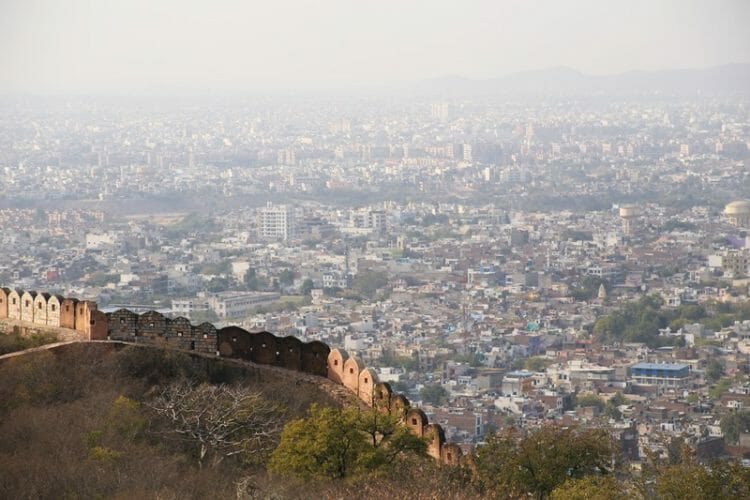
Also built by Jai Singh II, Nahargarh Fort is an underrated attraction in Jaipur that shouldn’t be skipped. It towers over the city on top of Aravalli Hills and dates back to the 18th and 19th centuries. Nahargarh means, “abode of tigers”, and was a defensive fort for Jaipur from its enemies.
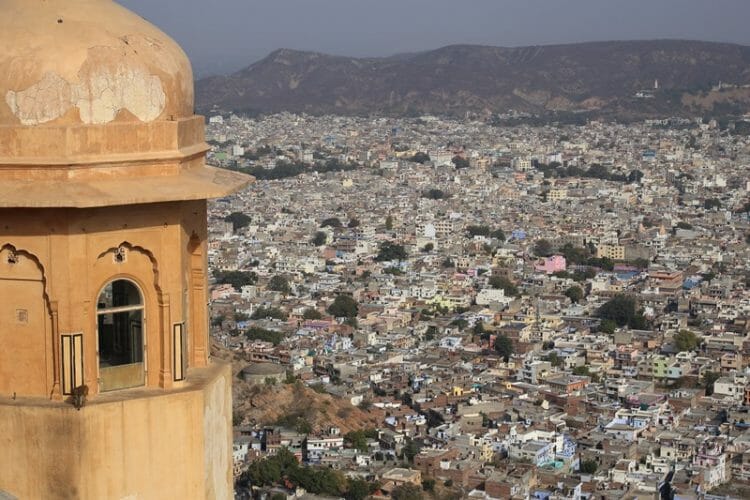
The sprawling complex provides some of the best views in Jaipur thanks to its strategic positioning, and houses several palaces and rooms that you can explore on foot.
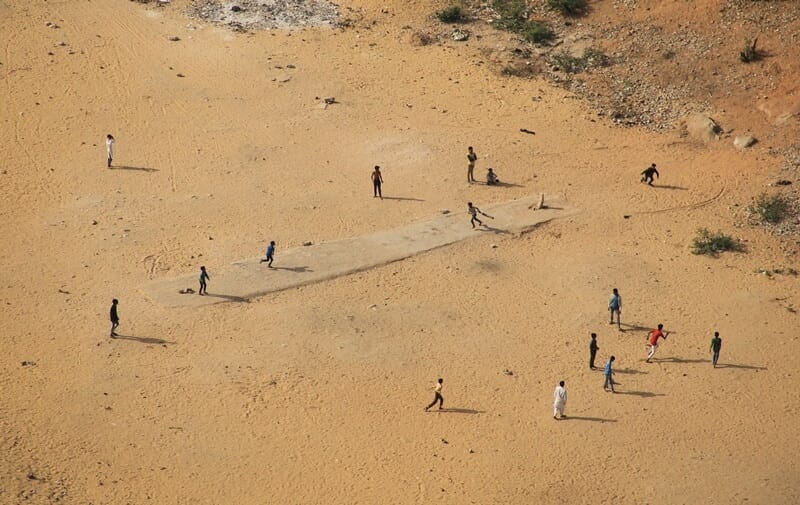
If you’re looking for the best sunset viewpoint in Jaipur then head here in the afternoon of your first day in Jaipur. The Fort is open from 10 AM to 5:30 PM and the entrance fee is 200 Rupees.
4. Jal Mahal

Jal Mahal, or the “Water Palace”, was built in the late 18th century by Maharaja Madho Singh who intended for the building to be used as a hunting lodge. Today, Jal Mahal can be spotted from the banks of the Man Sagar Lake – and though you can’t tell from a cursory glance, the palace actually consists of 4 additional underwater levels.
Unfortunately the palace is not usually open to the public, so you can only view the palace from a roadside pathway. It is located halfway between Amber Fort and the old city of Jaipur, so you can make a quick photo stop here at the end of your first day in Jaipur.
5. Visit the City Palace
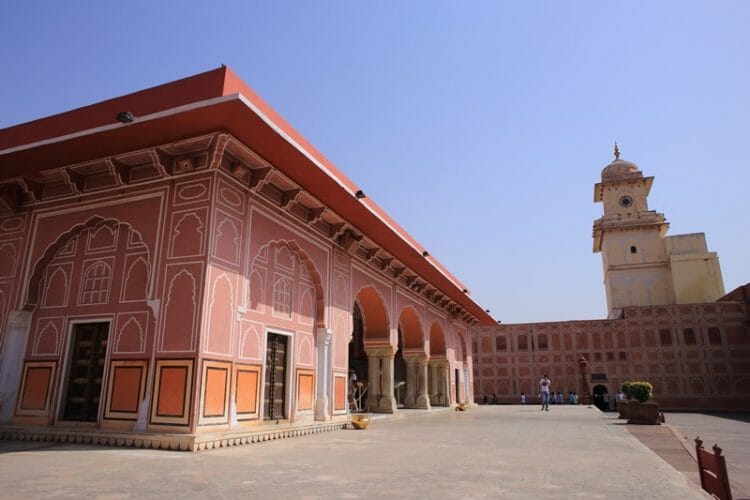
After a restful night’s sleep, you can embark on your second day of sightseeing in Jaipur. On day 2 in Jaipur, head straight to the City Palace in the morning. Though the Royal Family of Rajasthan no longer has any administrative or legislative powers, they still own and manage the historic City Palace. The palace was built in the mid-18th century after Jai Singh II moved the capital from Amer to Jaipur, and like the rest of the city the Mughal-style palace is adorned in coats of classic Jaipur pink paint.
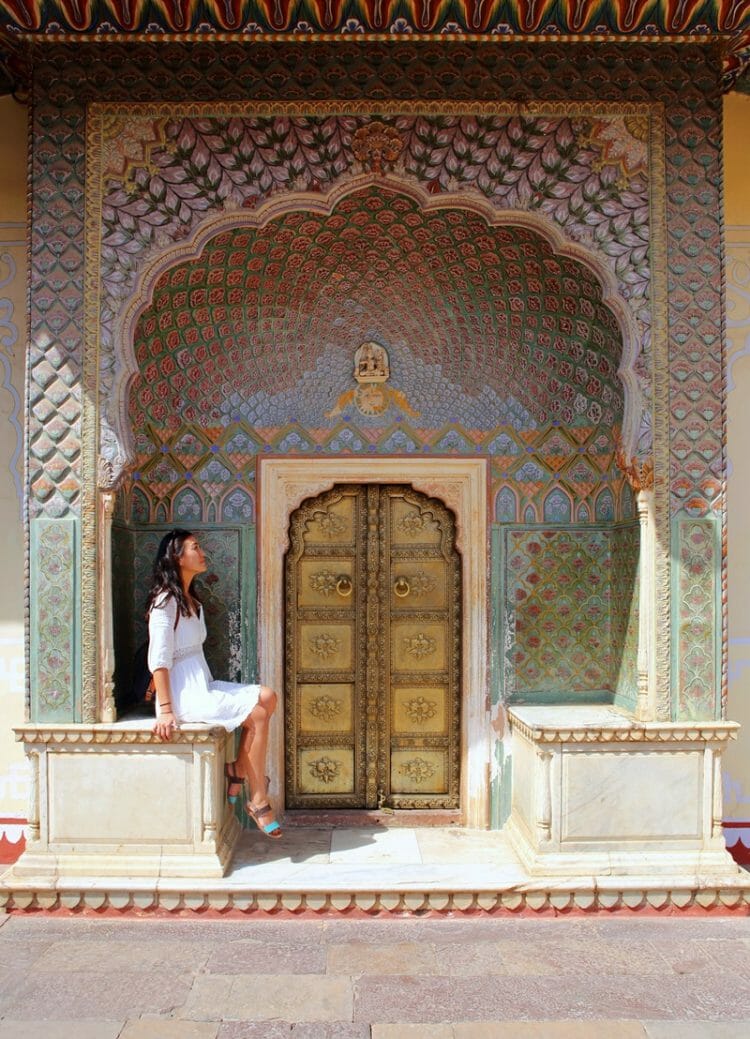
Much of the complex is open to the public as the Maharaja Sawai Man Singh II Museum, and offers several courtyards, galleries and exhibits showcasing traditional royal costumes and weaponry for visitors to explore. Step into a piece of history and experience the living heritage of the city – this is why the City Palace is on every itinerary for Jaipur!
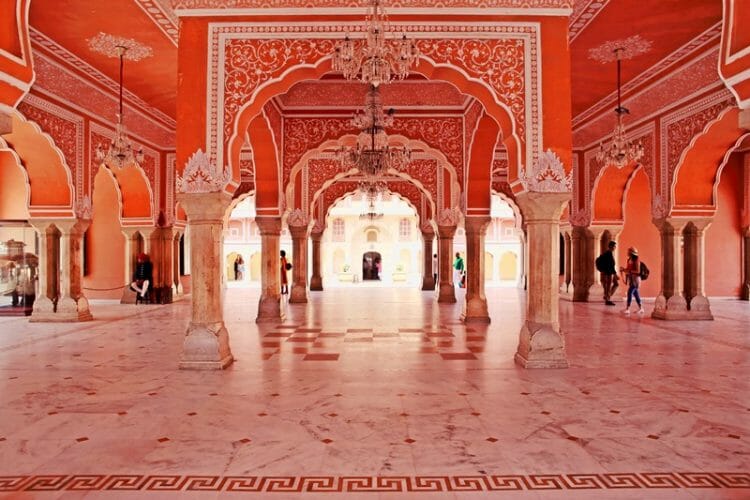
There is also a subsection of the palace consisting of several private rooms that requires a special ticket to access: the Chandra Mahal Verandah, Mukut Mandir, Sri Niwas, Chavi Niwas (the Instagram-famous “Blue Room” at the City Palace), Shobha Niwas, Rang Niwas and Pritam Niwas can be visited if you pay for a ticket that is approximately 5 times the price of the “regular” ticket.
Whether or not you splurge on that is up to you – we opted not to, and spent about an hour visiting the non-exclusive part of the palace. The City Palace is open from 9:30 AM to 5 PM and there are a variety of tickets starting at 700 Rupees for non-Indian visitors. Audio guides are available, or you can hire a private guide on-site for a small fee (not including tips). You can check the prices here.
Planning your luxury stay in Jaipur? The ITC Rajputana is one of the best luxury hotels in Jaipur – the rooms are spacious and comfortable, the staff are extremely friendly and helpful, and the grounds are spectacular. Click here to book your stay at the ITC Rajputana, or click here for other highly rated hotels in Jaipur!
6. Jantar Mantar
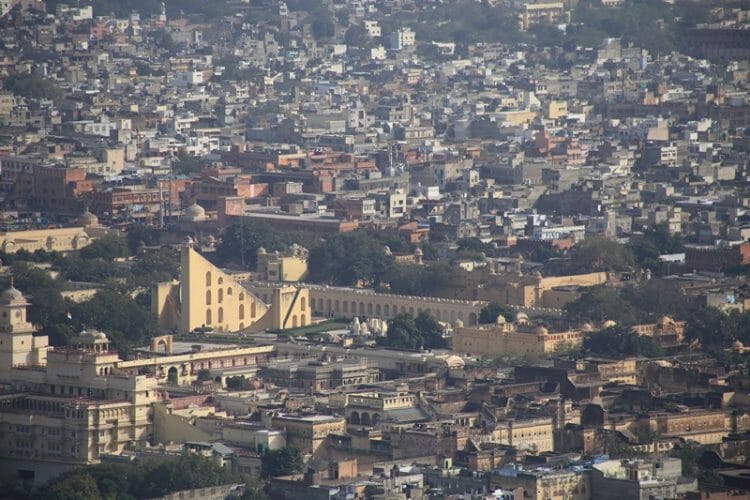
Jantar Mantar is one of several royal observatories built by Jai Singh II, the founder of Jaipur, and is just steps away from the City Palace. The fascinating complex is a UNESCO World Heritage Site and houses over a dozen astrological instruments; according to UNESCO, Jantar Mantar is “the most significant, most comprehensive, and the best preserved of India’s historic observatories.“
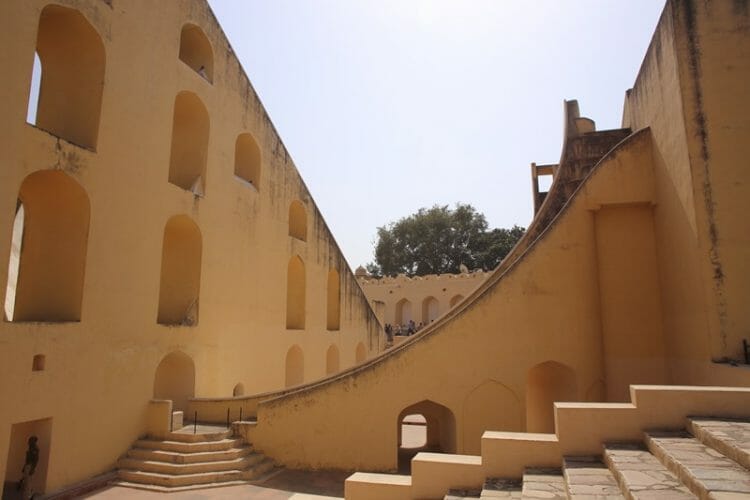
Among the collection is the world’s largest stone sundial (27 metres tall) as well as other astrological instruments, some of which are still used to this day!
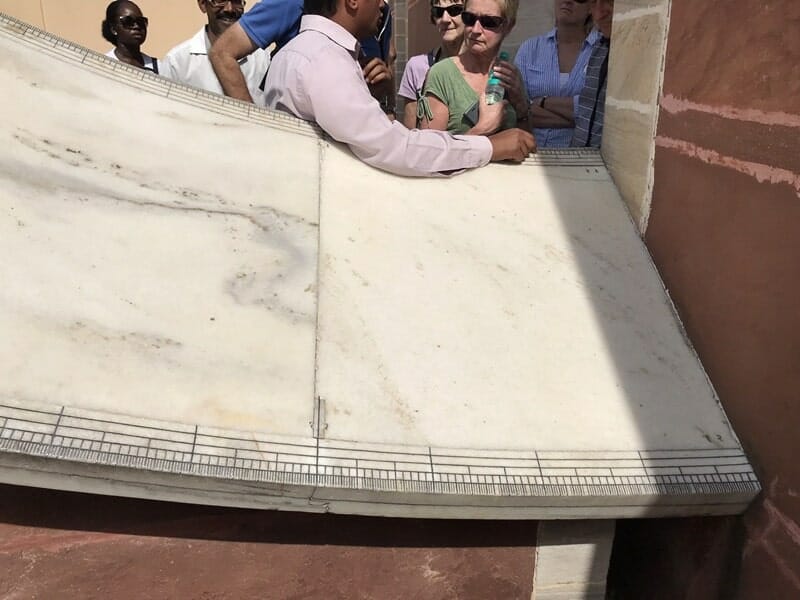
It is one of the quirkier Jaipur tourist spots – you might be surprised at how fascinating the history of this observatory is. Jantar Mantar is open from 9 AM to 4:30 PM and entry costs 200 Rupees.
7. Hawa Mahal
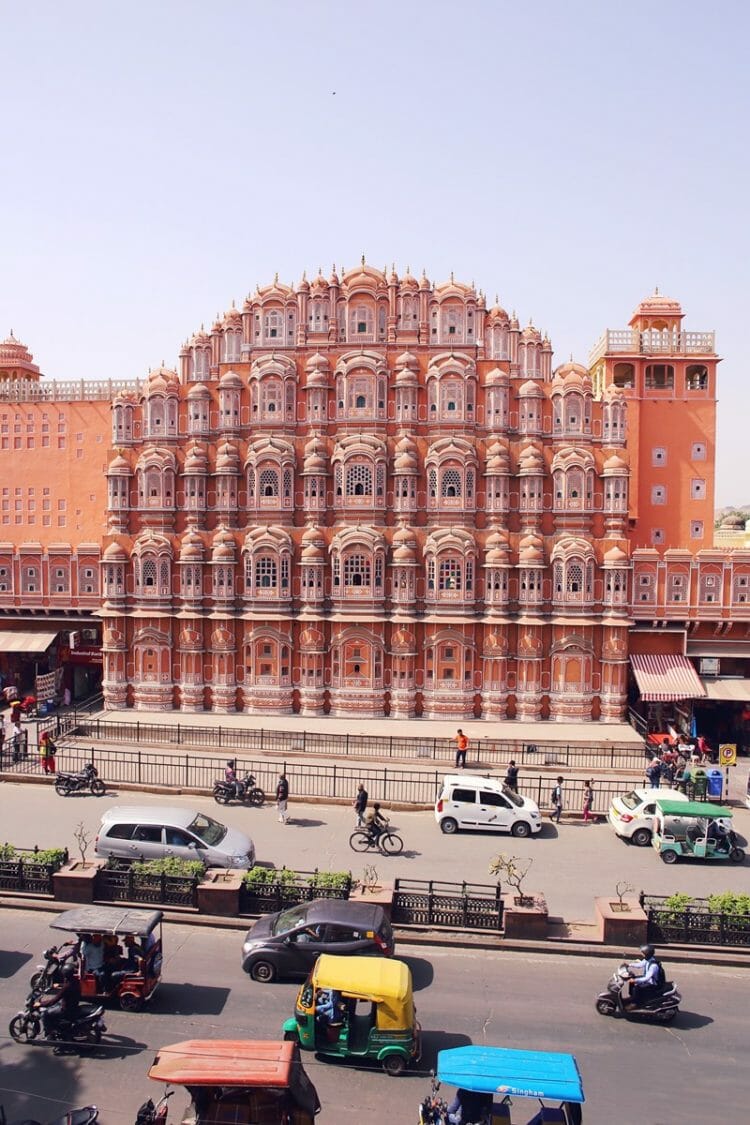
The Hawa Mahal, also known as the “Palace of Winds” or “Wind Palace”, was built by Maharaja Sawai Pratap Singh in the late 18th century out of red and pink sandstone. The design of the five-storey palace was modeled after Lord Krishna’s crown, and features nearly 1000 small windows to allow royal ladies to observe everyday life and festivals without being seen (since they weren’t allowed to appear in public without their faces covered).
The facade that you see from the street is actually the back of the structure, but the best view of the Hawa Mahal is actually from the building across the road. Take the stairs up to a small balcony area where you can view the Hawa Mahal front on, or grab a cup of chai at one of the cafes in the building.
Unless you are extremely keen to do so most visitors to Jaipur do not enter the Hawa Mahal itself. If you do wish to explore the interior the Hawal Mahal is open from 9:30 AM to 5 PM.
Where to stay in Jaipur: The ITC Rajputana is one of the best luxury hotels in Jaipur – the rooms are spacious and comfortable, the staff are extremely friendly and helpful, and the grounds are spectacular. Click here to book your stay at the ITC Rajputana, or click here for other highly rated hotels in Jaipur!
8. Patrika Gate
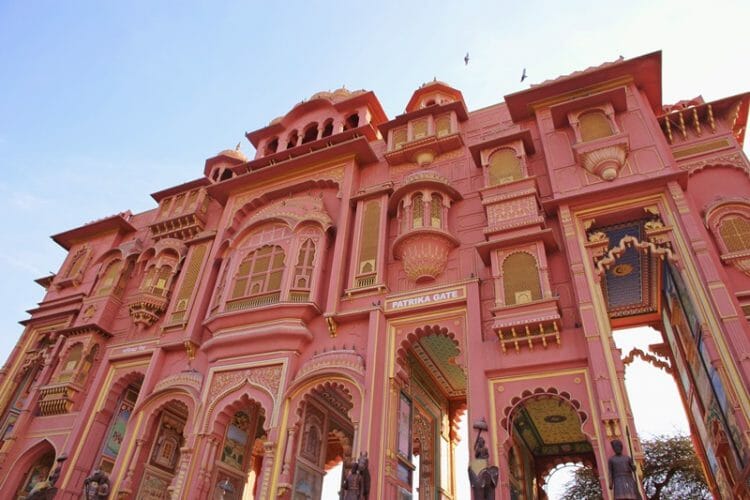
At the end of your 2 days in Jaipur, stop at the colourful Patrika Gate at Jawahar Circle, outside the city center.
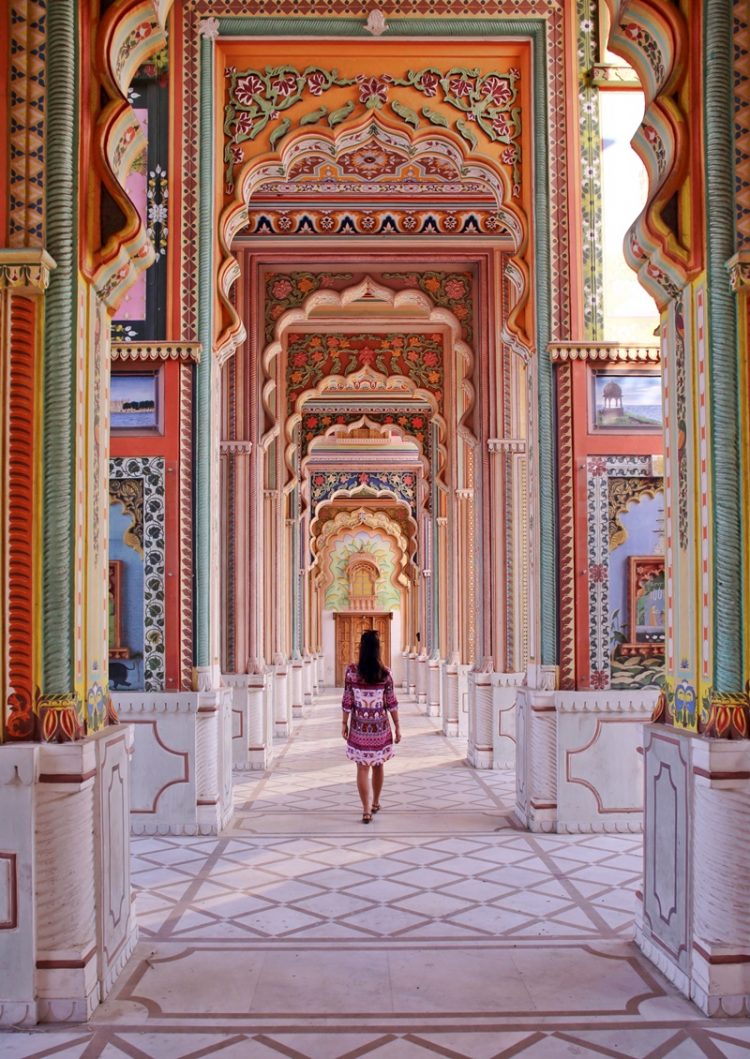
Though you’d think it has some sort of significant history, it was actually built rather recently by one of the local media companies in the country. There is no fee to visit the Patrika Gate.
9. Bar Palladio
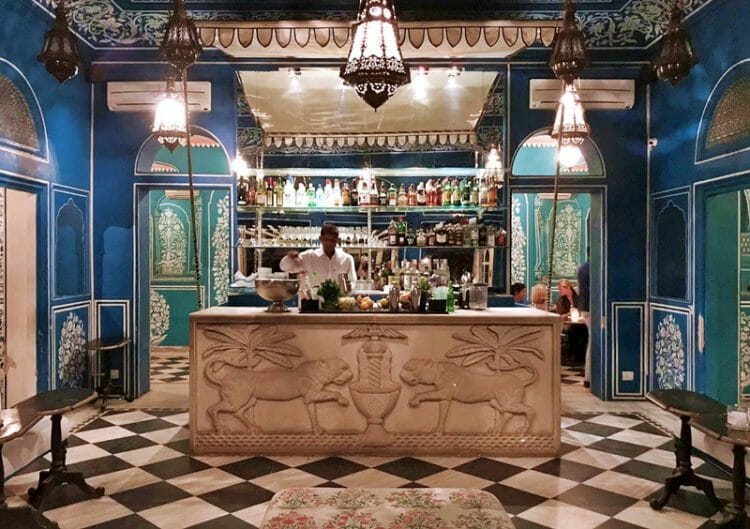
Now that you’ve finished your Jaipur city tour make sure you reward yourself with a cocktail or two at Bar Palladio within the historic Narain Niwas Palace Hotel. The bar itself is impeccably designed and transports you into a wonderfully whimsical world where traditional Mughal design effortlessly blends with chic Italian style. Unfortunately you aren’t allowed to take photos of the bar with your camera, but they do allow photography using your smartphone.
Have more time and want to extend this itinerary for Jaipur? If you have 3 days in Jaipur (or longer) you can also check out the Albert Hall Museum, Jaigarh Fort, Vidyadhar Garden, the Ramgopaliji Monkey Temple or the Samode Palace. Check out this website for more Jaipur travel ideas.
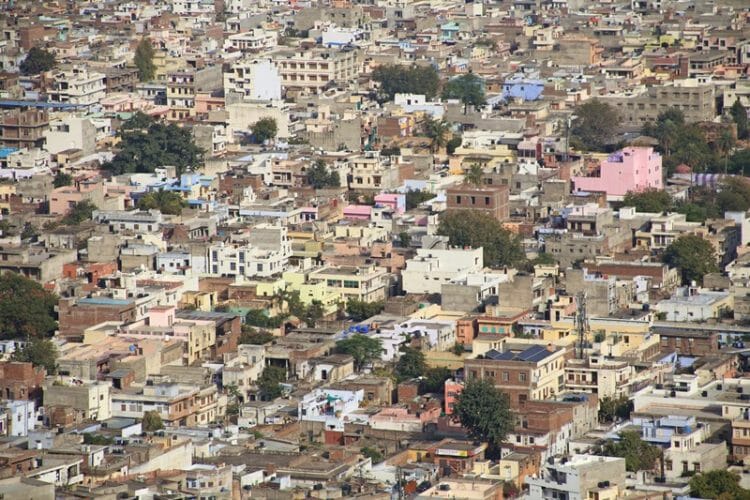
I hope this list of places to visit in Jaipur in 2 days helps you plan your trip more efficiently. Ready to take in the sights and sounds of Jaipur? The pretty Pink City is one of the most bewitching in all of India, and is an essential stop during your 1 week in Rajasthan.
Preparing for the ultimate Jaipur visit? The ITC Rajputana is one of the best luxury hotels in Jaipur – the rooms are spacious and comfortable, the staff are extremely friendly and helpful, and the grounds are spectacular. Click here to book your stay at the ITC Rajputana, or click here for other highly rated hotels in Jaipur!
Where to go after Jaipur
Wondering where to go after Jaipur? Here are some suggestions for your Rajasthan itinerary!
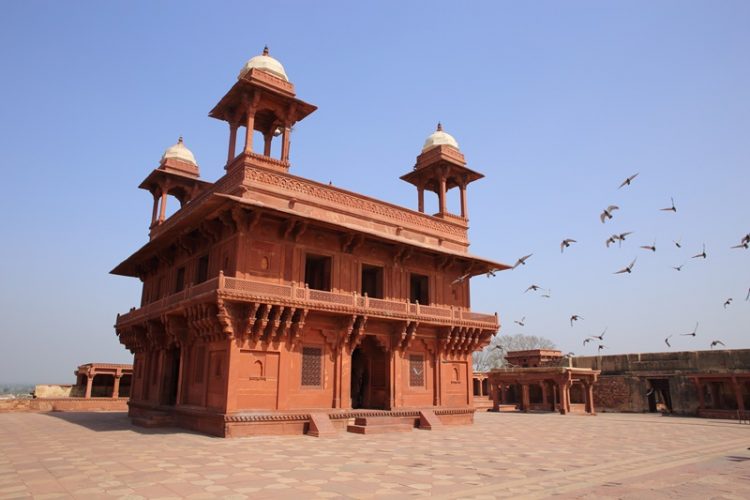
Fatehpur Sikri: Approximately mid-way between Jaipur and Agra is the abandoned city of Fatehpur Sikri, once the capital of the Mughal empire. Spend some time wandering around the complex and check out the various chambers, halls and towers – the highlights for me were the Panch Mahal, where the queen used to salute the sun in the mornings, and the Hindu queen’s palace.
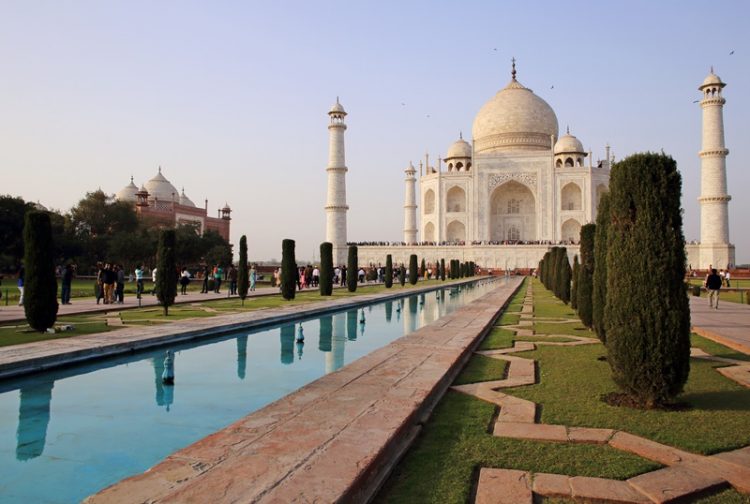
Agra: Agra is perhaps most famous for the Taj Mahal (or “Crown Palace”), and Agra Fort, a stunning complex dating back to the 16th century and was once home to the Mughal emperors. Today the fort is India’s most popular tourist attraction that welcomes tens of thousands of visitors each day. The Taj Mahal took 22,000 people 22 years to build – it was built using pristine white marble which is cleaned regularly with natural mud and lemon juice to protect the integrity of the stone.
Ranthambore National Park: Ranthambore National Park is approximately 3 hours away from Jaipur. This wildlife reserve is one of the biggest national parks in India, and is popular with visitors hoping to catch a glimpse of a tiger in the wild.
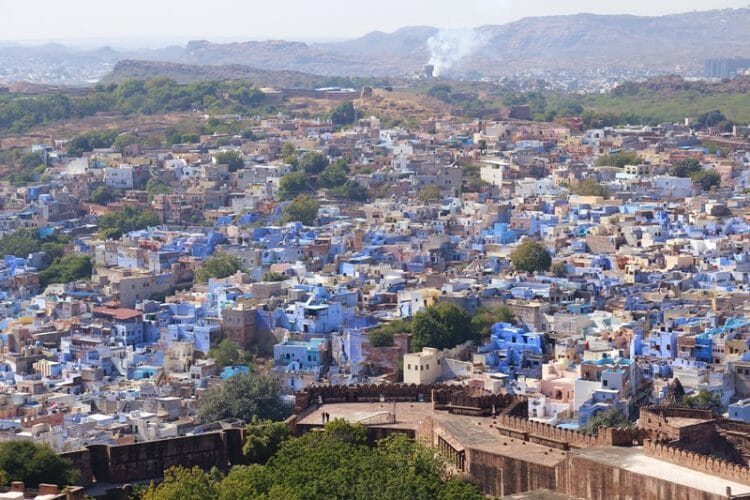
Jodhpur: The drive from Jaipur to Jodhpur will take you just over 6 hours. Jodhpur is home to the colossal Mehrangarh Fort, a UNESCO World Heritage Site visible from almost all corners of the city. The “Blue City” also features distinct sky blue-coloured houses scattered around the old quarters – it won’t take you long to realize where its nickname comes from. Read my 1 day Jodhpur itinerary here.
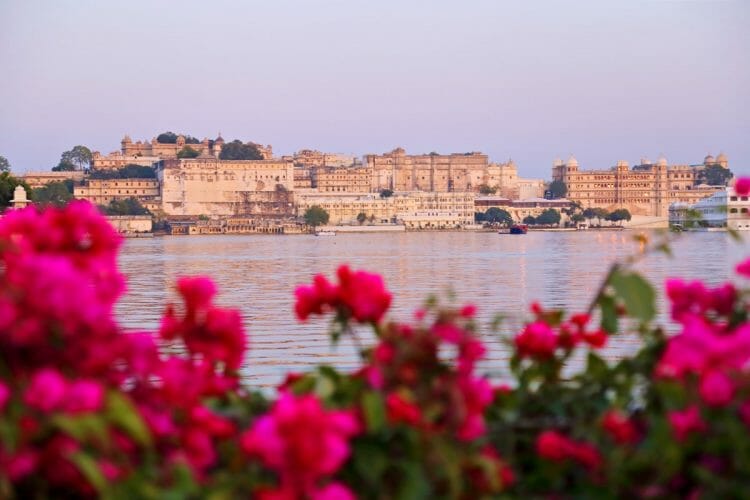
Udaipur: Udaipur is approximately 7 hours away from Jaipur by car. The “White City” or “City of Lakes” is yet another breathtaking city to visit in Rajasthan – make sure you visit the City Palace and take a sunset boat ride on Lake Pichola to Jagmandir. Click here for my quick Udaipur travel guide!
You might also find these guides helpful:
- Looking for an easy-to-follow itinerary for Rajasthan? Here is my 1 Week Rajasthan itinerary
- Want to embark on the classic Golden Triangle route? Read this India Golden Triangle guide and itinerary
- Head on over here for even more India travel tips and destination guides
Enjoyed this Jaipur travel guide? Share it or pin this for later!
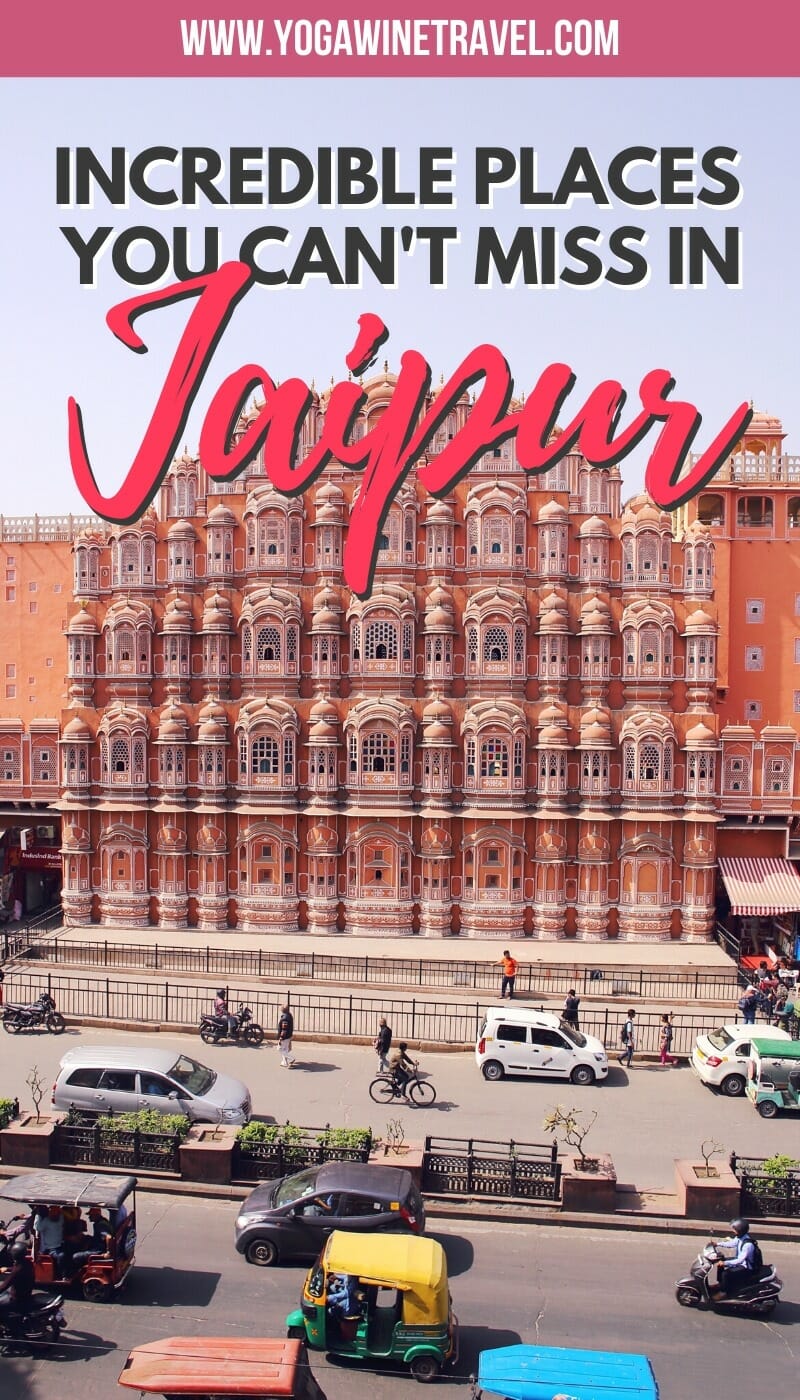

This article contains affiliate links. If you choose to book using these links, I will earn a small commission at no extra cost to you. Thank you for supporting my website by using these links, I only recommend products or services that I have had positive personal experiences with, and think you’d love too!
Enjoyed reading this article? Subscribe to the mailing list!
* Unsubscribe at any time. Your e-mail address will only ever be used to send the occasional Yoga, Wine & Travel newsletter.

